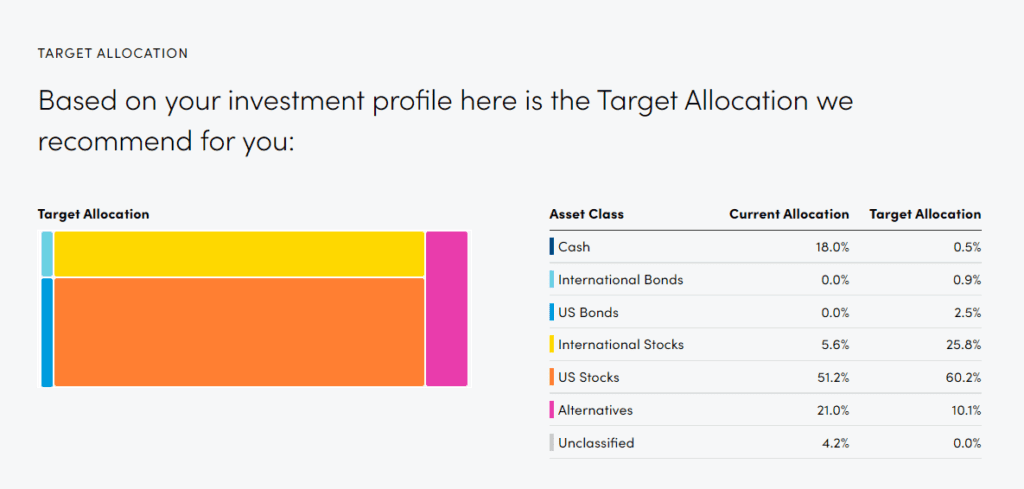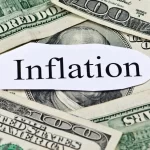This post may contain affiliate links. We may receive compensation when you click on links to those products at no additional cost to you. Read our full disclosure here.
Wouldn’t it be amazing to have an additional $1000 flowing into your bank account every month just from your investments? That extra money can be used to pay off debt, reinvested, or even treat yourself to something nice.
In this blog post, we’ll explore how much to invest to make $1000 a month in passive income, considering various rates of return and starting principals.
What Rate of Return Are You Expecting
The first thing you need to know when answering how much money you need to invest to make $1000 a month is – what rate of return are you expecting your investments to generate?
For example, if you can generate 100% a month (or 100% x 12 = 1200% a year), you only need to start with $12000 a year to generate $1000 a month ($12000/12 months). While that is not the most realistic example, here are some ways you can double $1000 fast if you’re a real degen.
For a more realistic scenario, see the table below for a breakdown of the rate of return you need to generate for different starting principals to make $1000 a month.
| Annual Rate of Return (Monthly RoR) | Starting Principal | Monthly Income |
| 4% (0.33%) | $300,000 | $1,000 |
| 5% (0.42%) | $240,000 | $1,000 |
| 6% (0.5%) | $200,000 | $1,000 |
| 7% (0.58%) | $171,400 | $1,000 |
| 8% (0.67%) | $150,000 | $1,000 |
| 9% (0.75%) | $133,333 | $1,000 |
| 10% (0.83%) | $120,000 | $1,000 |
| 11% (0.92%) | $109,090 | $1,000 |
| 12% (1.00%) | $100,000 | $1,000 |
*Please note that the figures are based on the nominal annual rates of return and a withdrawal strategy that allows you to tap into your investment earnings every month. This also means you’re not reinvesting your money for compounding purposes.
- 4% Rate of Return: If you expect a conservative 4% annual return on your investments, you would need to start with approximately $300,000 to secure $1000 per month in passive income.
- 7% Rate of Return: With a slightly higher rate of return at 7%, the required starting principal decreases to $171,400.
- 10% Rate of Return: For those willing to take on a bit more risk for potentially higher returns, an 10% annual rate of return would only require an initial investment of $150,000. This is about what the S&P 500 has generated over the past 30 years on a compounded basis.
- 12% Rate of Return: An annual 12% rate of return is considered pretty high historically and can be achieved by taking more risk like through alternative investments. The starting principal you’ll need to generate $1000 a month with 12% is $100,000.
A Word on Inflation
One important thing you need to be vigilant about is inflation. Inflation erodes the buying power of your money as things get more expensive.
Let’s say you have $300,000 to deploy and you want to play it safe by making 4% a year to make $1000 a month. If inflation is at 5% and you’re only generating 4%, your money is essentially losing 1% in value.
While inflation historically has been around 2-3%, there are times when inflation can remain elevated and destroy the value of your money if you’re not generating a high enough rate of return.
Types of Investments to Generate $1000 Monthly
When aiming to generate $1000 a month, there are various investment options to consider. Each investment type comes with its own set of pros and cons, and understanding these can help you make informed decisions based on your financial goals and risk tolerance.
I’ve included the expected rate of return based on BlackRock’s capital assumptions for the next 20 years.
Stocks
Read more about Stocks 101 here.
Expected annual rate of return: 7-10%
Pros:
- Potentially higher returns: Historically, the stock market has provided one of the highest average returns compared to other asset classes.
- Liquidity: Publicly traded stocks are generally easily traded, allowing you to access your funds quickly if needed.
- Dividend income: Some stocks pay dividends, providing a regular stream of income.
Cons:
- Volatility: Stock prices can experience significant fluctuations, leading to potential losses during market downturns.
- Risk of individual stocks: Investing in individual stocks can expose you to company-specific risks.
- Time and expertise: Picking individual stocks requires research and market knowledge.
Bonds
Read more about Bonds 101 here.
Expected annual rate of return: 3-5%
Pros:
- Steady income: Bonds typically offer semi-annual interest payments, providing a stable income source.
- Lower risk: Bonds are generally considered safer than stocks as they have fixed interest payments and a defined maturity date.
- Diversification: Bonds can be used to diversify a portfolio and reduce overall risk.
Cons:
- Lower returns: Historically, bond returns have been lower than those of stocks.
- Interest rate risk: Bond prices and interest rates are inversely correlated. This means that if interest rates go up, your bonds will decrease in value.
- Inflation risk: Bond returns may not keep up with inflation, potentially reducing purchasing power over time.
Real Estate
Read more about how to invest in real estate here.
Expected annual rate of return: 3-5% (appreciation only, rental income will boost that number up)
Pros:
- Rental income: Owning rental properties can provide a steady stream of rental income.
- Property appreciation: Real estate investments may appreciate over time, increasing the value of your assets.
- Inflation hedge: Real estate can act as a hedge against inflation, as rental income and property values may rise with inflation.
Cons:
- Property management: Managing rental properties requires time, effort, and additional expenses.
- Market dependence: Real estate values can be influenced by local market conditions and economic factors.
- Illiquidity: Real estate investments are relatively illiquid compared to stocks and bonds. You typically need a couple of months to buy or sell real estate.
Dividend Funds and REITs (Real Estate Investment Trusts)
Expected annual rate of return:
Pros:
- Diversification: Dividend funds and REITs offer exposure to multiple companies or properties, reducing individual asset risks.
- Passive income: These investments focus on providing regular dividend payments to investors. REITs are mandated to distribute 90% of taxable earnings to shareholders.
- Professional management: Funds and REITs are managed by professionals, saving you time and effort.
Cons:
- Management fees: Funds and REITs may charge management fees, which can affect overall returns.
- Market risk: These investments can still be affected by market fluctuations and economic conditions.
- Limited control: Investors have limited control over the specific assets held within the funds or REITs.
Exchange-Traded Funds (ETFs)
Expected annual rate of return: Varies based on what type of ETF you buy.
Pros:
- Diversification: ETFs are similar to mutual funds but trade on stock exchanges, offering instant diversification as it holds many assets in one basket.
- Liquidity: ETFs can be bought and sold throughout the trading day at market prices.
- Lower expense ratios: ETFs often have lower expense ratios compared to traditional mutual funds.
Cons:
- Brokerage fees: Buying and selling ETFs may involve brokerage commissions.
- Market risk: ETFs, like stocks, are subject to market volatility.
- Tracking error: Some ETFs may not perfectly track their underlying indexes, leading to tracking errors.
Structuring Your Portfolio Efficiently
Once you know how much you need to invest to make $1000 a month, you need to make sure that you structure your investment portfolio strategically as well.
Structuring your portfolio the right way is important as you need to not lose sight of the big picture – your overall portfolio. Don’t compromise the integrity and riskiness of your portfolio just to try to make that $1000 a month.
A well-diversified portfolio can help mitigate risks and also enhance the potential for steady income over time. Here are some key steps to consider when structuring your portfolio:
- Define your financial goals and risk tolerance.
- Select assets that are diversified and can generate your targeted return.
- Select investment accounts that best suit your tax situation. There are many retirement plans that are tax-advantaged to choose from.
- Monitor and rebalance at least annually.
I personally like to use Empower to track my portfolio and my investments. Empower has very helpful tools (like the image below) that can help you assess your current asset allocation and make recommendations to help achieve your targets.

How Much to Invest to Make $1000 a Month
As demonstrated by the table above, how much to invest to make $1000 a month depends on two crucial factors: the rate of return and your initial investment (starting principal). It’s essential to strike a balance between risk and reward, aligning your investment strategy with your financial goals.
Keep in mind that investment returns are not guaranteed and can fluctuate over time. Before making any investment decisions, it’s wise to consult with a financial advisor who can help tailor an investment plan that suits your unique circumstances.
Now that you know how much to invest to make $1000 a month, start saving up to get that bread. Happy investing!
This post may contain affiliate links. We may receive compensation when you click on links to those products at no additional cost to you. Read our full disclosure here.






